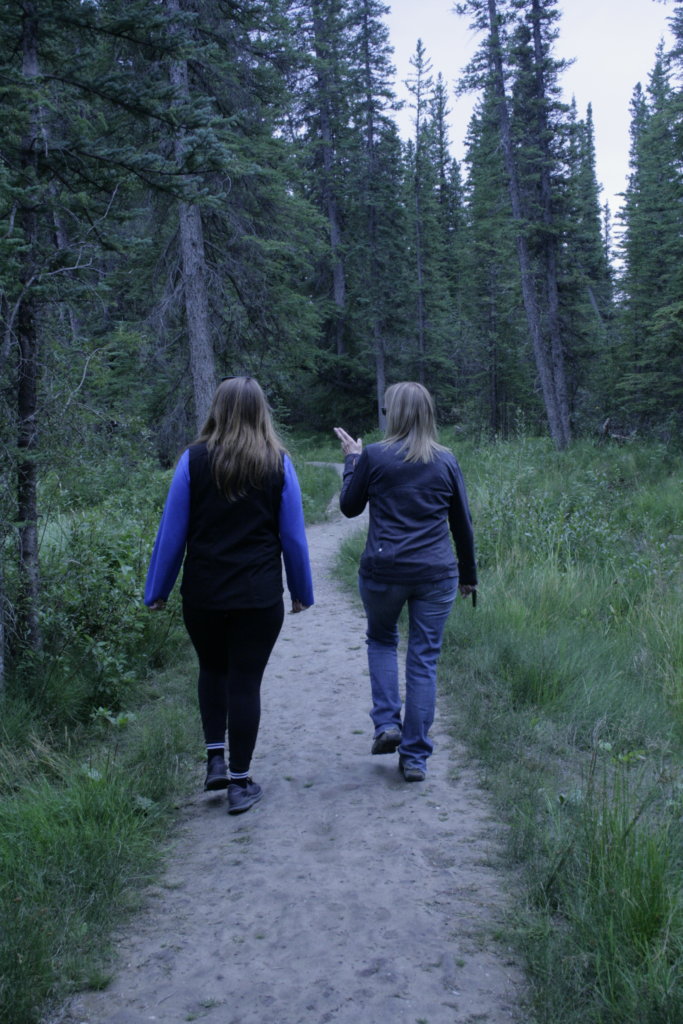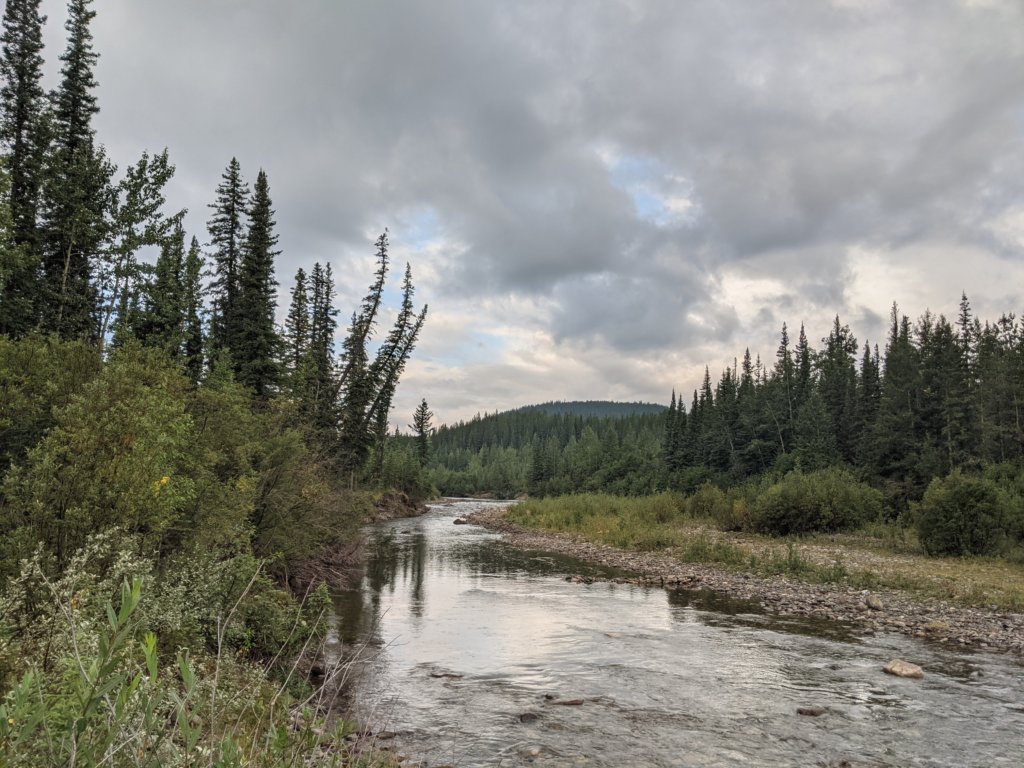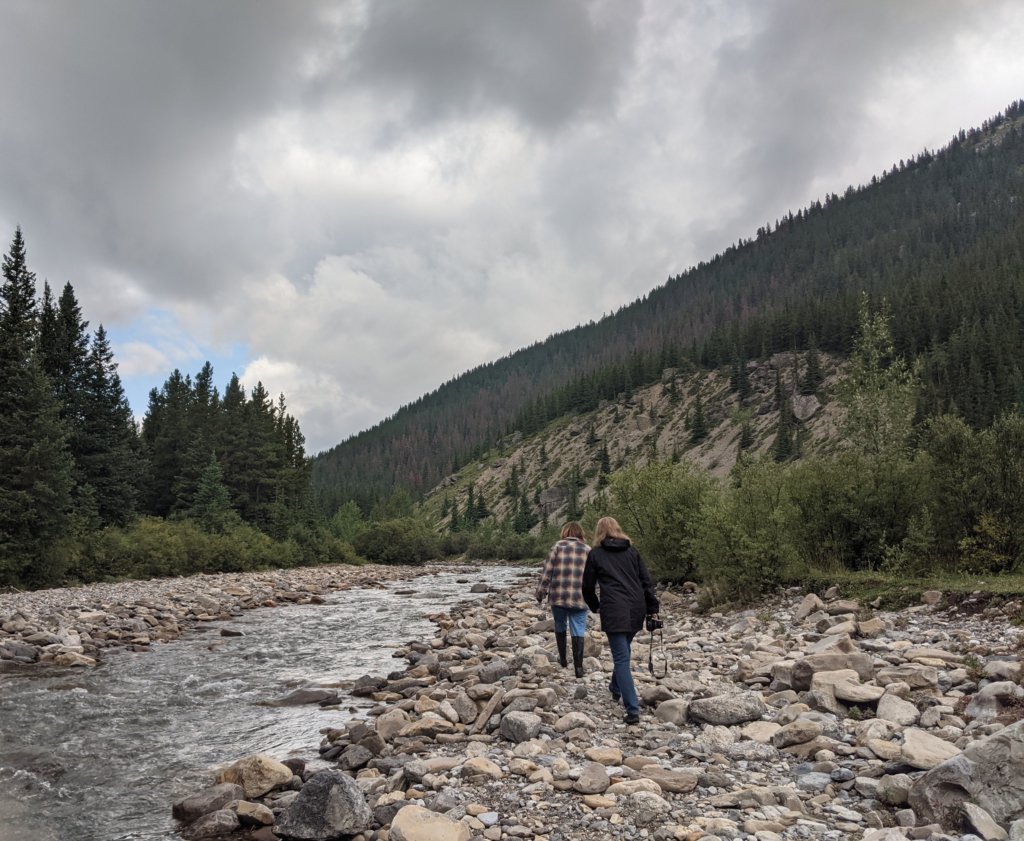Upper Athabasca Biomonitoring Project: Site Selection Trip
AWC-WPAC | August 2021
Ashley Johnson, Science and Education Coordinator
On August 18th, Sarah (our watershed planner), Petra (our executive director), and I drove to Hinton to start selecting sites for our Upper Athabasca Biomonitoring Project. The biomonitoring project will help collect data for two different initiatives: CABIN (Canadian Aquatic Biomonitoring Network) and STREAM (Sequencing the Rivers for Environmental Assessment and Monitoring).
CABIN is a program to provide standard data collection protocols for benthic macroinvertebrates in order to determine the health of the water body. Benthic macroinvertebrates include critters like bug larvae, snails, and leeches. As part of the effort to make these samples comparable, they have to be taken from a riffle—a section of a stream that’s shallow with a decent current. STREAM uses the same data collection protocols as CABIN. The samples we collect for CABIN will go to a lab for taxonomic identification (someone will tell us exactly what critters we found); the STREAM samples will go to a lab to get blended up, and the DNA in the samples will be extracted and analyzed.
We wanted to find streams that would represent conditions of tributaries of the Athabasca River. Before we went out, Petra and Sarah looked at maps and tried to find sites that should work, and all we had to do was go out and confirm that they were what we were looking for, and safe to work in. The main areas we plan to monitor are by the McLeod River and some of its tributaries near Cadomin, the Lovett River (a tributary of the Pembina River), and Solomon Creek.
Lavone Olson (one of our board members) met us at one of our potential sites, right near where Solomon Creek enters the Athabasca River. After we had surveyed that location, Lavone graciously drove us up to some more sites on Solomon Creek, further from its confluence.

Once we had surveyed those sites, we headed back to Hinton for dinner, and a stroll around the Beaver Boardwalk.

The next morning, we got up and talked about our plan for the day. We wanted to look for sites on some tributaries of the McLeod, so we drove to Cadomin, stopping at Gregg River on the way there.

We drove through Cadomin, going even further past it to Whitehorse Wildlands Provincial Park, to check out Whitehorse Creek (another tributary of the McLeod).

From here, we drove back to Highway 40. We were hoping to look at some tributaries of the Pembina, but with the way our site sampling was looking, we could only get to the Lovett River. Hopefully in coming years we’ll be able to sample more of the Pembina tributaries. This year is mostly a pilot year, to get a feel for the work. From there, we started on the long drive back to Athabasca.
We’ll be coming back in September to do our sampling. If you want to see which sites we ended up choosing, stay tuned for a post about our field work in the future!
